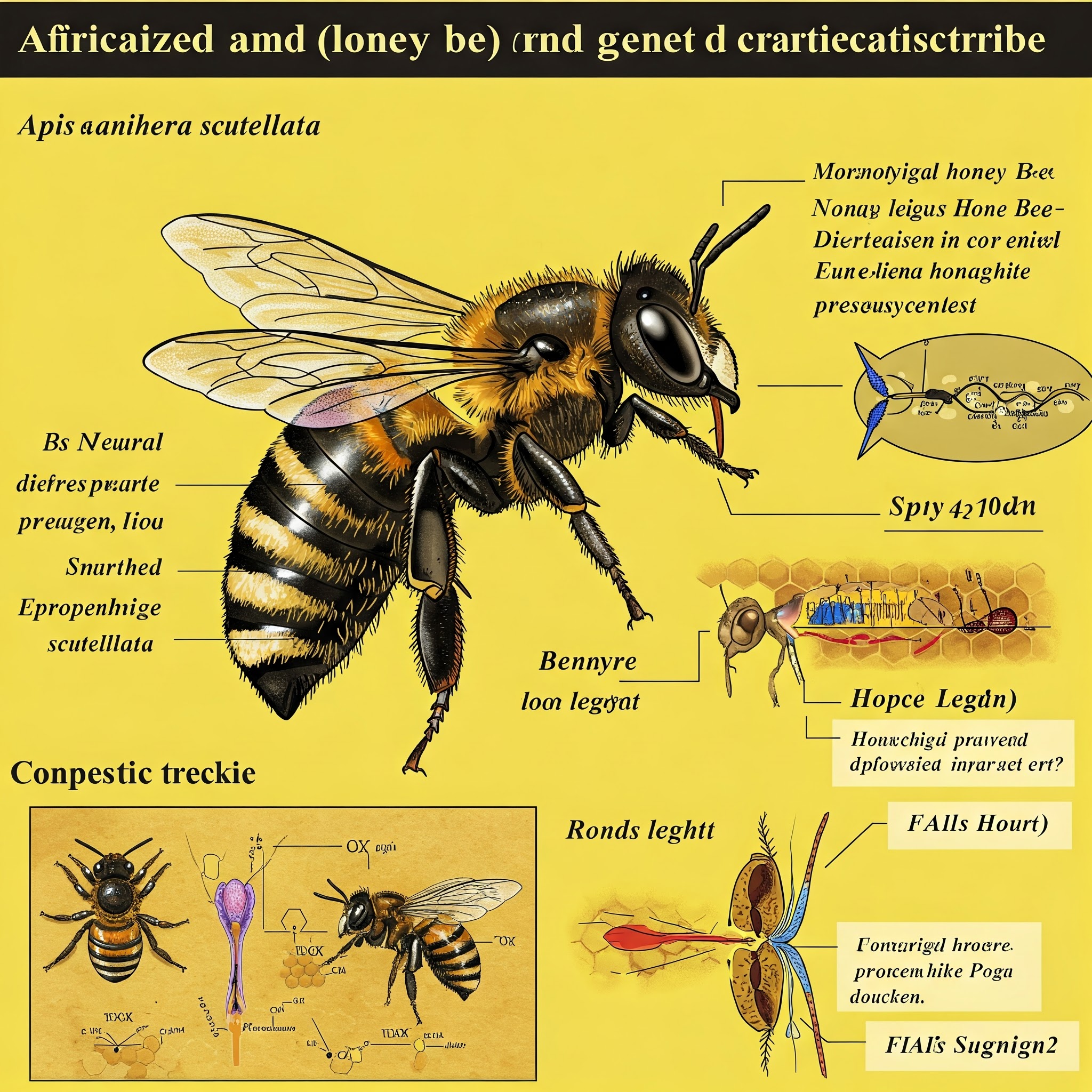Africanized honey bee (Africanized apis mellifera), is a bee species that emerged as a result of the hybridization of African-origin honey bees with European-origin honey bees in the Americas. Africanized honey bees are noted for their high adaptability and aggressive behavior. These characteristics have enabled them to rapidly adapt to new environmental conditions and spread over a wide geographical area.
Taxonomy and Origin
The Africanized honey bee is not a scientifically defined species or subspecies, but rather a population name that emerged from the hybridization of Apis mellifera scutellata (African honey bee) with some European-origin honey bee subspecies. This hybridization was carried out as part of a breeding program initiated in Brazil in 1956. The program's goal was to produce honey bees better adapted to tropical climatic conditions.
However, the uncontrolled release of some African queen bees into nature in 1957 led to the spread of Africanized honey bees. Despite their characteristic differences, the name “Africanized honey bee” does not refer to a scientific taxonomic classification, but rather to a hybrid population with specific biological and behavioral traits. For this reason, these bees are often referred to as Africanized Apis mellifera in scientific studies.
Morphological and Genetic Characteristics
Africanized honey bees show morphological similarities to European-origin honey bees. However, genetic analyses have revealed that these bees carry African-origin genetic traits. These genetic traits have also brought about their behavioral and physiological differences.

Africanized Honey Bee (Generated by Artificial Intelligence)
Reproductive Structures
The reproductive behaviors of Africanized honey bees (Africanized Apis mellifera) distinctly reflect the species' characteristic high aggressiveness and tendency to colonize. These bees typically mate with the queen bee in the air in "mating areas" (drone congregation areas), which are special regions where male bees gather for reproduction. After leaving the colony, the young queen mates with numerous male bees consecutively in the air; this process involves multiple matings, ensuring genetic diversity. This multiple mating strategy increases the adaptability and resilience of colonies, facilitating the rapid spread of Africanized honey bees.
Africanized honey bee colonies frequently divide ("swarming") during reproductive periods to form new colonies. During this behavior, the old queen departs with approximately half of the colony to establish a new nest, while the remaining bees continue their lives with a new queen raised within the colony. Africanized bees, which swarm more frequently and intensely compared to other honey bee species, thus possess a rapid dispersal capacity. The high swarming frequency increases the population density of colonies and accelerates their colonization of new habitats. This situation leads to Africanized bees gaining a competitive advantage over other bee species in the regions where they are found.
Behavioral Characteristics and Ecological Impacts
Africanized honey bees are known for their strong defensive behaviors. When they perceive their colonies as threatened, they can launch rapid and collective attacks. Furthermore, these bees behave more aggressively when searching for new nests and can rapidly adapt to environmental conditions.
Africanized honey bees have spread over a wide area, starting from South America and extending to Central and North America. This spread has put pressure on local honey bee populations and led to the decline of local species in some areas. Moreover, the pollination behaviors of these bees have positively influenced the pollination processes of local plant species.
Impacts on Humans and Agriculture
The aggressive behavior of Africanized honey bees has led to various problems in interactions with humans. Particularly in beekeeping activities, the management of these bees has become more challenging. However, in some regions, these bees are also economically valued due to their high honey production potential.


